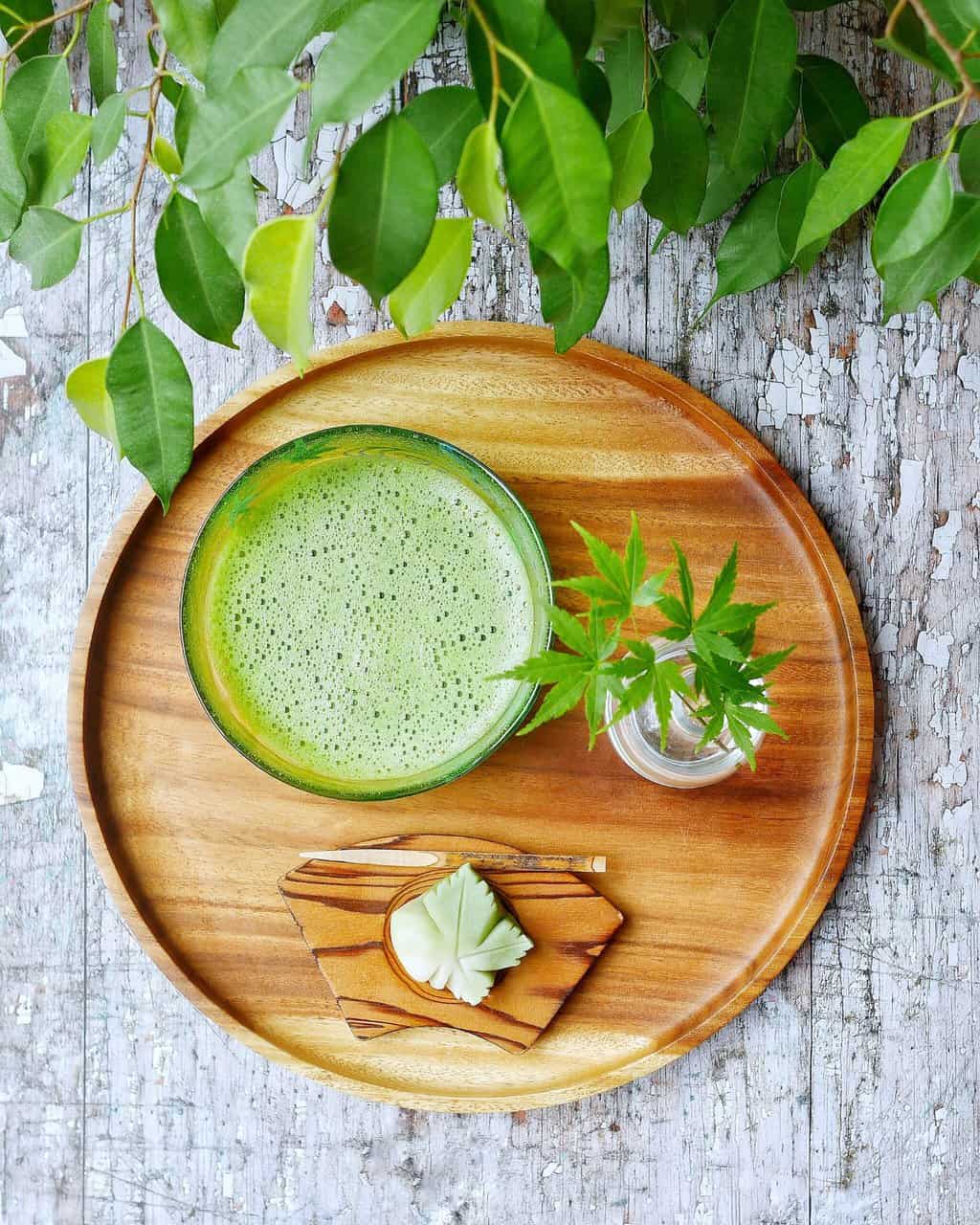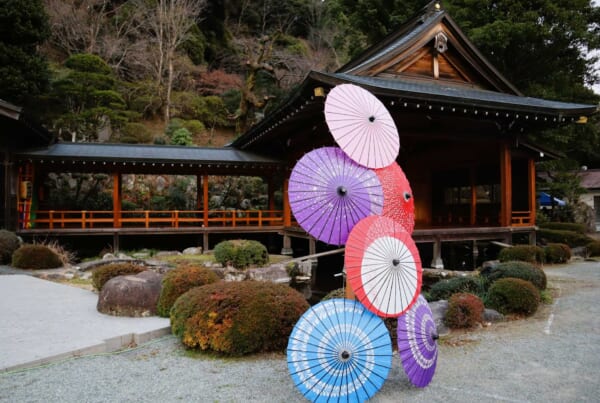My introduction to the world of Japanese tea ceremony (茶道, chado) took place during my first visit to Japan in 2016. Everywhere I stayed, from the smallest ryokan to the grandest hotels, Japanese green tea was served, and tea-making equipment was supplied in my room. My first tea ceremony experience was at a small tea house in Kyoto; this encounter ignited my interest in Chado. I immediately was drawn to the understated elegance of the tearoom and the variety of beauty displayed by the tea utensils. Everything from the kimono worn by the chajin (茶人, tea people) to the delicate sweets in the form of seasonal flowers served with the vibrant green bowl of matcha was a feast for the senses. After years of independent research and self-study, it was an absolute joy to finally begin formally practising Chado with a sensei of my own in London.
- The History of Japanese Tea Ceremony
- What is the Japanese Tea Ceremony?
- Kimono: The Traditional Outfit for Tea Ceremony
- Japanese Tea Gardens
- The Chado Tearoom
- Flowers for the Tea Ceremony
- Calligraphy for the Tea Ceremony
- What Are the Utensils for a Japanese Tea Ceremony?
- Traditional Japanese Sweets Served for Chado
The History of Japanese Tea Ceremony
According to legend, Shen Nong discovered tea in China in 2737BC. It made its way to Japan in the 8th century, carried by Buddhist monks returning from China via the Silk Road. The celebrated tea master Sen no Rikyu (1522-1591), the founder of Teaism, shaped Japanese tea culture into the art form we now recognise as Chado or the Way of Tea. He was the father of wabi cha, tea of quiet taste, which promoted the use of rustic pieces in the tea ceremony. The three main schools of tea are Urasenke, Omotesenke, and Mushakojisenke.
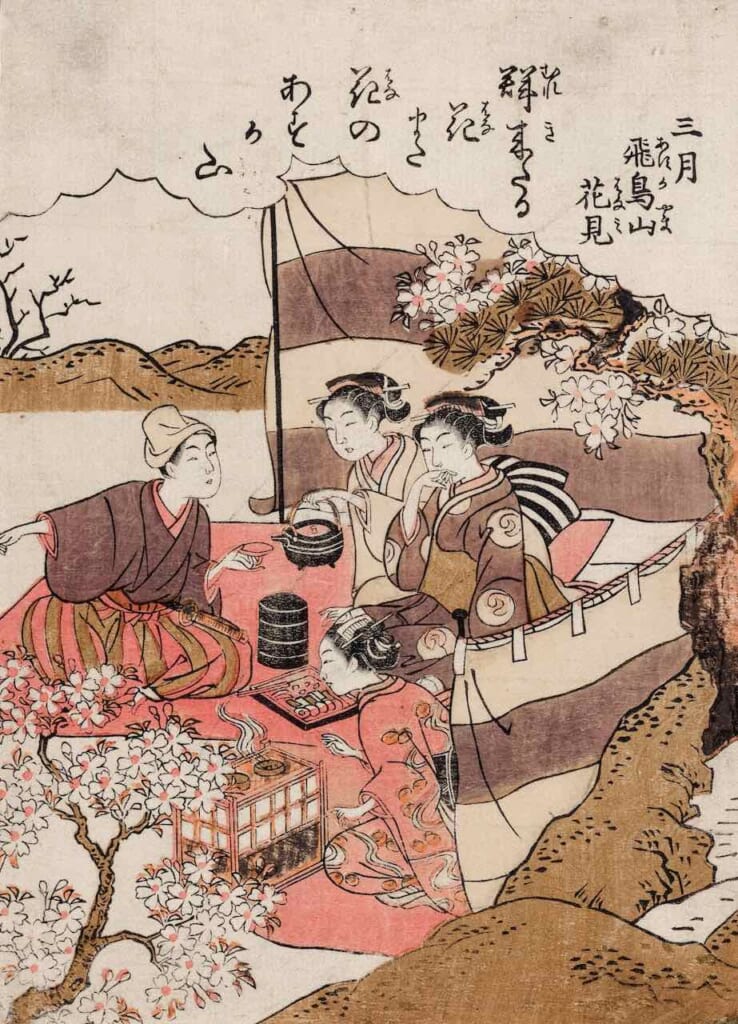
What is the Japanese Tea Ceremony?
In 1872, the Japanese government officially recognized chanoyu (茶の湯) as a Japanese art form of great cultural significance. Chanoyu, usually translated as tea ceremony, literally means hot water for tea. It is the ritual of preparing and serving matcha, a powdered Japanese green tea. There are four guiding principles of Chado, according to Sen no Rikyu. These are Wa, Kei, Sei and Jaku. First, Wa is the perfect harmony of all elements. Second, Kei is a reverence and respect for all things. Third, Sei represents cleanliness, order, and purity. Finally, Jaku means calm or tranquillity.
The tearoom was an oasis in the dreary waste of existence where weary travellers could meet to drink from the common spring of art appreciation. The ceremony was an improvised drama whose plot was woven about the tea, the flowers, and the paintings.
Okakura Kakuzo
Chanoyu also teaches art appreciation, showing reverence for the chabana (茶花, tea flowers) and calligraphy scroll is one of the first things guests do upon entering the tearoom. Examining the tea utensils is the final part of the ritual, the last thing guests do before leaving the tearoom; this is called haiken, the viewing of the utensils. After the last guest has finished their tea, the first guest will enquire about the provenance of the utensils, including the chashaku (茶杓, tea scoop) and natsume (棗, tea caddy). Where was it made? Who was it made by? What is it called?
Kimono: The Traditional Outfit for the Tea Ceremony
Both men and women traditionally wear kimono to attend and host tea gatherings. Besides geisha, tea ceremony practitioners are some of the last people left in Japan who still wear kimono regularly. However, there are guidelines about what kind of kimono should be worn to tea gatherings. Traditionally, guests attending a tea ceremony remove their jewellery and wear white tabi socks and iromuji (色無地), a kimono of a single solid colour without large patterns or flashy designs. Younger women wear pale pink or peach tones, while older women wear muted shades of silver grey, brown or dark blue.
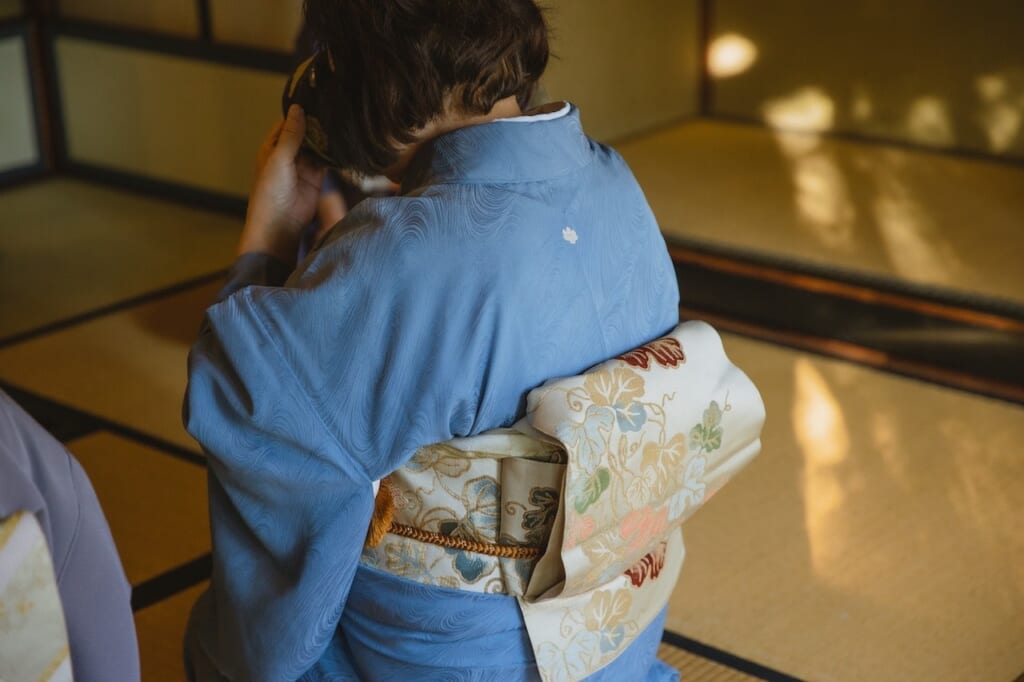
The kimono is a wearable art form; the t-shaped garment comes to life when wrapped around the human body. By wearing kimono to make and serve tea, chajin demonstrate the beauty of Japanese textiles, as they were designed to be seen, worn, and gracefully in motion, as opposed to hanging flat in an exhibition. However, the kimono is an endangered Japanese art form. As the national dress of Japan, the kimono was once worn daily. However, after the economic boom of the 1980s, fewer and fewer Japanese people wore kimono. They are now generally reserved only for special occasions such as weddings or coming of age ceremonies.
The lack of demand for new kimono, combined with the advanced age of kimono craftspeople and no apprentices to take their place, has led to a systemic decline in the kimono industry. So, attending a tea gathering is a rare opportunity to enjoy wearing kimono or see it being worn. As anyone who has worn one can tell you, wearing a kimono immediately changes how you move; you have to slow down, move at a slower pace, take smaller steps, and change how you sit. There is an understated elegance to the kimono worn to tea ceremonies. They may not be the eye-catching kind worn by maiko and geisha, but they have a quiet beauty, harmonising with the other elements of the tea room, so no one element outshines another.
Japanese Tea Gardens
Inspired by Zen principles, the roji (露地), meaning dewy path, is the most modest of all Japanese gardens. As you walk through the tea garden, you will notice varied shades of green foliage and mosses and the absence of any brightly coloured flowers. This is because the roji is designed to help soothe the mind and prepare you to enter the world of tea. Guests enter through a gate and travel through the tea garden along a stone path. This journey is meant to symbolise leaving behind the outside world and your worldly concerns before entering the teahouse.
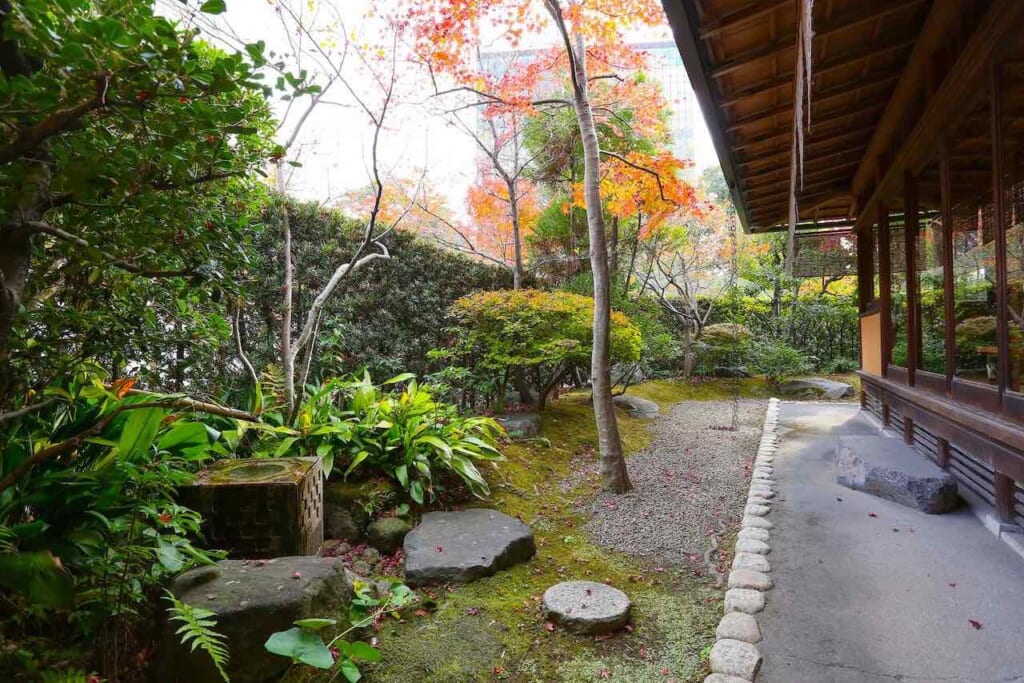
The Chado Tearoom
The chaseki (茶席, tearoom) is a modest space, many of which resemble small cottages of only four and a half tatami mats wide. It is designed to be a sanctuary, built using only natural elements, like wood and bamboo, anchoring it in the natural world. It is without ornament, which like the white walls of an art gallery, provides the perfect stage for the tea ceremony and allows the beauty of the few carefully chosen decorative elements to shine through.
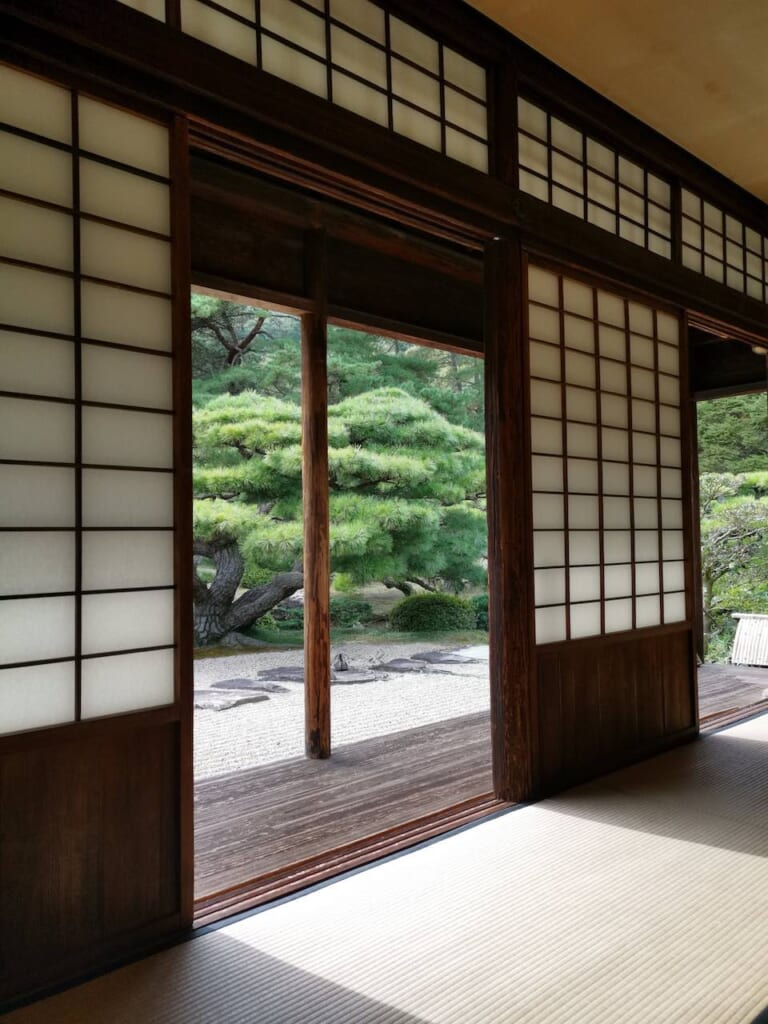
In every tearoom, you will find a tokonoma (床の間); this alcove is a space dedicated to showcasing art. It houses the chabana flowers and the hanging scroll, the only two decorative elements in the otherwise bare room. Okakura Kakuzo (1863-1913), author of The Book of Tea, believed that the tearoom was the only place where one could engage in the “adoration of the beautiful,” undisturbed by the aggravations of modern life. Even though he was writing in 1900, his words seem more appropriate than ever. I know that the three hours a week I spend at keiko (tea ceremony practise) are a tonic to living in a world where we can rarely disconnect. When you are focused solely on the procedures for making tea and the objects in front of you, everything becomes quieter, and you can appreciate the beauty of each item.
“The single flower preserved in the tearoom…greatly intensified the beauty of all the flowers in the garden.”
Soshitsu Sen XV
Flowers for the Tea Ceremony
Chabana (茶花) are flowers chosen for a tea gathering. Unlike ikebana, this minimalist arrangement usually only includes one or two stems of seasonal flowers in a bamboo basket or vase. Flowers that are brightly coloured or have a strong perfume are not suitable for the tearoom because they could disrupt the delicate balance of elements in the space. Instead, the flowers should look like they have just been picked and are fresh from the field.
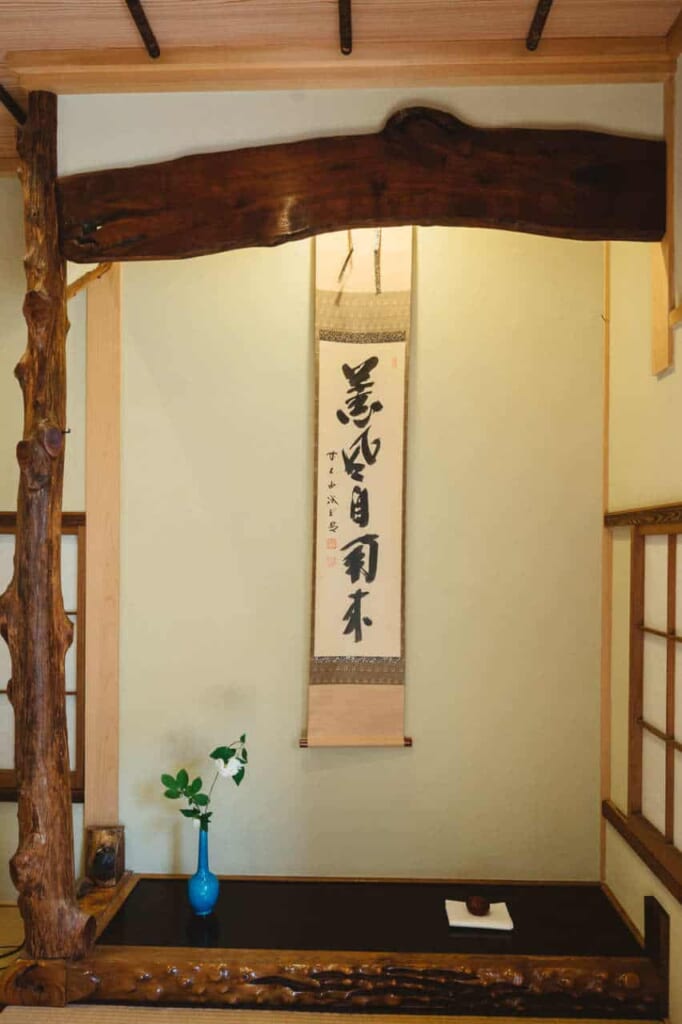
Calligraphy for the Tea Ceremony
Another one of the art forms showcased during the tea ceremony is calligraphy, often composed by a celebrated priest or tea master known for their brushwork. This critical element of chanoyu will be in the form of a kakemono (掛物, hanging object). These are vertical Japanese scroll paintings or calligraphy mounted onto brocade fabric so they can be easily rolled and stored. The host takes time to select a suitable kakemono for each tea gathering, depending on the season and the feeling they want to convey. This artwork is the first thing guests see when entering the tearoom, and in combination with the chabana, it will set the mood of the tea gathering. Sometimes this may only be a single character. For example, in June, my sensei chose a scroll that read taki (滝, waterfall) to suggest feelings of coolness on a hot day.
What Are the Utensils for a Japanese Tea Ceremony?
A 17th-century Spanish priest once called the dōgu (道具, Japanese tea ceremony utensils) the crown jewels of Japan. These items vary depending on the season and formality of the tea gathering. Still, the following items will always be present, a tea bowl, tea caddy, tea whisk, and scoop. These are carefully purified in front of the guests before each bowl of tea is made, showing reverence for the utensils and deference to the guests. Japanese aesthetics prize asymmetry over symmetrical and odd numbers over even, so no one colour or design is repeated when all the objects are assembled. Instead, the dōgu, combined with the chabana and kakemono, will suggest an overall seasonal theme.
The Chawan or Tea Bowl
In the tearoom, Japan’s rich history of ceramics is represented by the chaire (茶入, container for thick tea) and the chawan (茶碗) tea bowl. The tea bowl is the most iconic tea utensil, and because both the host and the guest handle it, it is also considered the most important. Like works of art, each tea bowl has its own poetic name. These can be divided into three categories. The most prized tea bowls are Raku (楽焼, raku-yaki), meaning enjoyment or pleasure. Raku bowls are usually black or red. These pieces are made in the Raku family kiln, whose lineage stretches back to the 16th century.
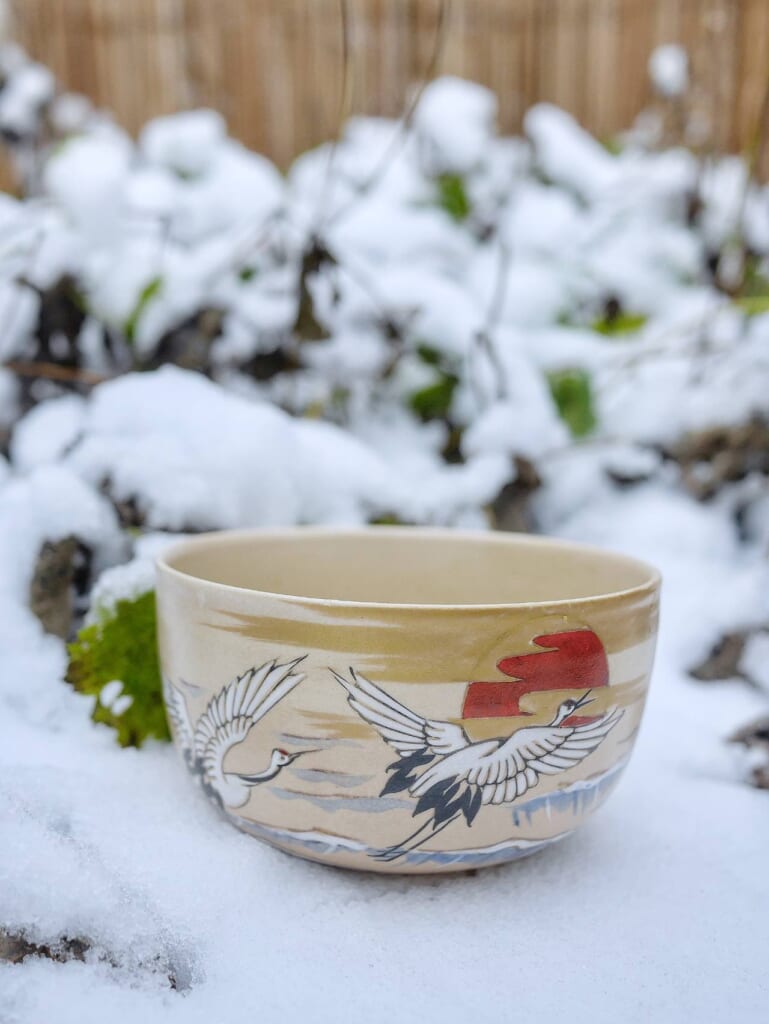
Finely made tea bowls from Kyoto, called Kyō–yaki (京焼, Kyoto ware), are admired for their brightly coloured designs. These tea bowls are made in Kyoto by its many talented ceramists. Ogata Kenzan (1663-1743) was one of the most talented, famous for painting and calligraphy. He often incorporated brushwork into his ceramic pieces. The last type is Kuni-yaki (国焼, country fired), which encompasses pieces from all over Japan and includes hundreds of styles, including Hagi ware (萩焼, Hagi–yaki). When you drink matcha from one of these beautiful chawan, you appreciate tea bowls in a new way. Understanding how the weight of a heavy-set raku bowl feels comforting in your hands or how the modest surroundings of the tearoom highlight the ornate designs of a Kyō-yaki bowl.
The Chasen or Tea Whisk
Bamboo is an instantly recognisable element of Japanese art and design. In chanoyu, it is represented by the chasen. The chasen (茶筅, tea whisk) is one of the essential tools necessary to perform the tea ceremony and perhaps the most recognisable after the chawan. It has a history of over 530 years, and like the chashaku (茶杓, tea scoop), both are carved from bamboo, and their form has remained unchanged for hundreds of years.
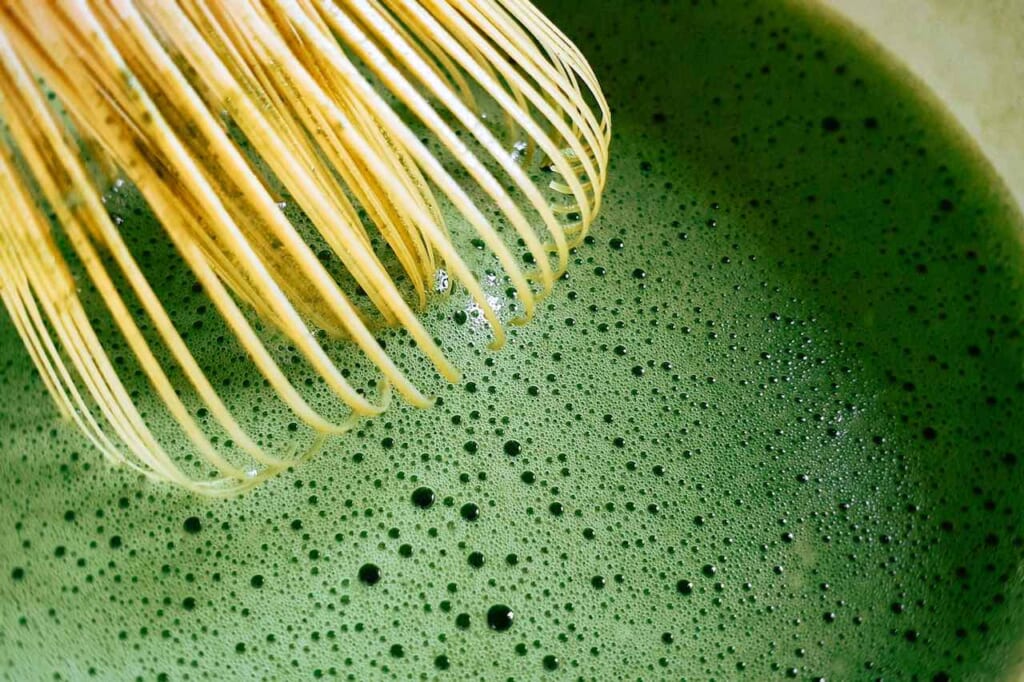
The village of Takayama in Nara has been the chasen-making centre of Japan for centuries, and this is where 90% of Japanese tea whisks are made. Traditionally crafted bamboo chasen are made entirely by hand; it can take 2-3 years to make a single chasen. Each chasen is made of a single piece of bamboo split into strands. Legend has it that the form of chasen we now use was designed in the c.1500s by poet Takayama Sozei.”(-1455). When you enter a tearoom, you will notice several bamboo elements in the room, including flower containers, water ladles, and incense boxes, which are all used in chanoyu.
Japanese Lacquerware
The East Asian history of lacquerware goes back thousands of years. In the tearoom, Japan’s lacquerware (漆器, shikki) tradition is represented by lacquered trays or boxes used to serve sweets and the natsume (棗), the ceremonial tea caddy for usucha (薄茶, thin tea). Natsume are named after the jujube or Chinese red date. They are traditionally made from wood and coated with layers of black or red urushi lacquer, which hardens as it cools. The base can be left plain or decorated using gold and silver powders to create elaborate designs. This technique is called maki-e (蒔絵, sprinkled picture). Natsume have a rounded cylindrical shape, slightly wider at the top, and a gently domed lid.
Traditional Japanese Sweets Served for the Tea Ceremony
Japanese confectionery has a history spanning thousands of years. Its three primary influences are Chinese sweets, chanoyu, and the arrival of Westerners in Japan. Sugar was once a luxury item, only enjoyed by the aristocracy. However, once Spanish and Portuguese merchants arrived, refined sugar became much more readily available. From the Edo period (1603-1867) onwards, wagashi (和菓子) came into its own, and demand exponentially increased. At the same time, chanoyu was also growing in popularity and these two art forms supported each other’s development. Chado contains elements that appeal to all five senses, including taste. We can admire the beauty of calligraphy and feel the glaze of a chawan beneath our touch. Wagashi, the Japanese sweets served before tea, are designed to stimulate both our sight and taste.
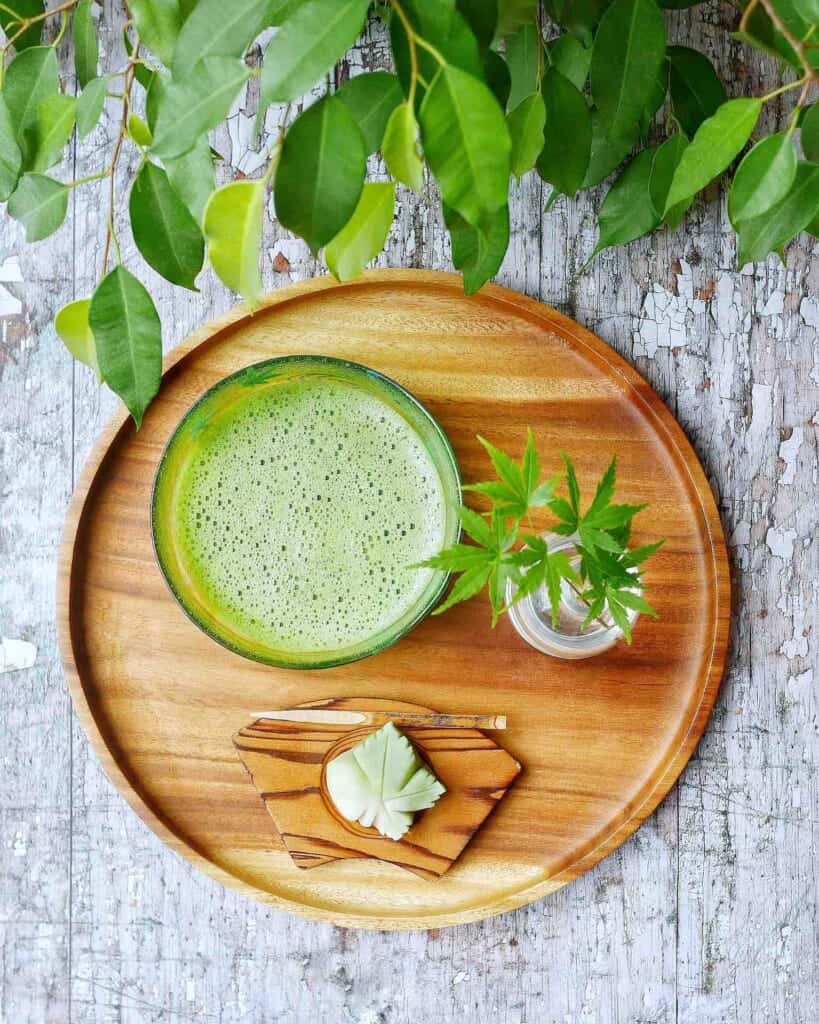
The term wagashi was coined during the Meiji era (1868-1912) wa (和) meaning Japanese, and gashi (菓子), meaning sweets. Two varieties of wagashi are served during the tea ceremony. Namagashi (生菓子, fresh, moist sweets) like nerikiri (練り切り), made from red and white bean paste and shaped by hand into the form of seasonally specific flowers, are served just before koicha (濃茶, thick tea.) These sweets are designed to be the perfect pairing for the tea, and their delicate sweetness is the ideal foil for koicha. Dry sugar sweets called higashi (干菓子), which are pressed into the shapes of seasonal symbols and plants, are served just before the guests enjoy their usucha. These edible works of art represent the very best of traditional Japanese confectionery.
The tearoom acts as a sanctuary from the modern world and the perfect, minimal exhibition space to showcase the myriad forms of Japanese art and aesthetics visible during the tea ceremony. It is also the only place outside a museum or private residence where you can see all these Japanese art forms in one place. Moreover, these items are alive and actively used in the tearoom, just as they were during Sen no Rikyū’s lifetime.
Chado is an art form that results in an elegant dance across the tatami of the tearoom. The practice of chanoyu cultivates an attitude of appreciation, quiet observation, and gratitude. It teaches us to broaden our definition of beauty to include objects we might not have considered previously. The more I study chanoyu, the more I value minimalism and understand the merits of a single bud over a bouquet.


